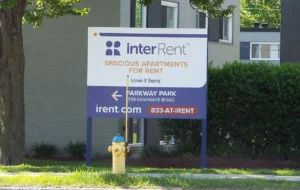How to Minimize Vacancy Periods

Streamlining Rental Turnovers
Vacancy is more than just an inconvenience—it’s one of the biggest drains on your rental income. Every day a rental property sits empty, you’re losing money, momentum, and opportunity. And if your turnover process is slow, disorganized, or reactive, those days can pile up fast.
The good news? Minimizing vacancy isn’t about working harder—it’s about working smarter. With the right planning and systems, you can turn rentals quickly, reduce downtime, and get high-quality tenants in place without sacrificing quality.
In this blog, we’ll walk through proven strategies to speed up the turnover process while maintaining professional standards. From early move-out prep to real-time scheduling and efficient marketing, we’ll show you how streamlined turnovers lead to stronger cash flow.
Let’s dive into the steps you can take to stay ahead of the vacancy curve.
Start Before the Tenant Moves Out
Minimizing vacancy doesn’t start when the tenant leaves—it starts weeks (or even months) before that. The most efficient turnovers are the ones that begin before the keys are even handed back.
Notice Tracking and Proactive Communication
As soon as a tenant submits notice, the clock starts ticking. This is the moment to engage—not just with your internal team, but with the tenant as well. Confirm the move-out date and provide clear written instructions on how the unit should be left. That includes sending a detailed checklist to the tenant and confirming any special circumstances that might delay turnover.
Tenants who understand expectations upfront are far more likely to leave the property in clean, manageable condition, saving you time and money.
Pre-Moveout Inspections
Don’t wait until the rental is empty to discover what needs fixing. A pre-moveout inspection conducted 30–60 days before lease end can reveal wear and tear, damage, or upcoming maintenance needs. These early insights help you draft a Turn Scope in advance, so you’re not scrambling to gather bids after the rental is vacant.
Early Scope Approvals = Faster Project Starts
The fastest turnovers happen when funding and approvals are already in place before the last box is moved out. That’s why we send the Turn Scope for approval before the rental is officially vacant. When owners respond quickly, we can have vendors scheduled and materials prepped—ready to go the minute the property is accessible.
This pre-approval system eliminates lag time and keeps your project on track. Owners who delay decisions unintentionally extend their vacancy, and that delay costs more than just time—it costs rent.
Speed isn’t about rushing through the process. It’s about removing friction. The sooner your team knows what needs to happen, the sooner they can make it happen. Starting before move-out is the secret weapon for minimizing vacancy gaps.
Screen Your Tenant Today!
Gain peace of mind with AAOA’s credit, criminal, and eviction reports.
Build an Efficient Turnover Workflow
Speed is the goal, but structure is the secret. A fast turnover isn’t just about doing things quickly—it’s about doing them in the right order, with no wasted motion.
Re-key, Cleanout, and Repair in the Right Sequence
The moment you receive the keys, re-secure the property. A locksmith re-keys all exterior locks to ensure safety and prevent former tenants from accessing the rental. Next, any trash or abandoned belongings are removed. Only once the property is cleared and secure does your maintenance team step in.
Repairs, paint touch-ups, and appliance checks are all handled in a logical sequence. This sequencing avoids overlaps and delays—no cleaners walking in while painters are still working, no vendor waiting around for a prior task to finish.
Maintenance Reserve and Owner Funding Timelines
Even the most organized turnover will stall if there’s no money to move forward. That’s why we maintain a maintenance reserve for each property. This reserve allows us to begin work immediately while larger scopes are reviewed.
When scope costs exceed the reserve, owners are notified to make an owner contribution. The faster that payment comes in, the faster we proceed. We encourage all owners to pre-fund their account as soon as a vacancy is confirmed. A simple deposit can eliminate a 3-to-5-day delay—and that’s real money saved in rent.
Weekly Inspections During Vacancy
Vacant rentals require eyes on the ground. Perform regular inspections of all vacant properties, with increased frequency during winter months. These visits aren’t just for show—they protect your asset and help keep work on track.
Verify that completed tasks meet your quality standards, confirm progress on any remaining repairs, and ensure the property is ready for showings. If something is behind schedule, catch it early and course-correct in real time.
These check-ins also prevent surprises—like weather damage, vandalism, or frozen pipes—that could derail a smooth lease-up. Weekly inspections give you confidence that your property is not only rent-ready, but fully protected during the turnover process.
Bottom line: structure speeds things up. When everyone knows what comes next and has what they need to get it done, you cut days off your vacancy and protect your long-term ROI.
Time Is Money, So Make the Most of Both
The true cost of vacancy isn’t just lost rent. It’s the opportunity cost of momentum lost. Every extra day your unit sits empty delays income, pushes out ROI timelines, and keeps your portfolio from reaching its full potential.
That’s why streamlined turnovers are a competitive advantage.
Source: RL Property Management













 Accessibility
Accessibility